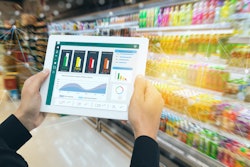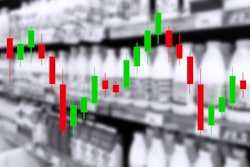
Slower growth in overall grocery spending is anticipated during the next five years, but the online segment (aka e-grocery) is projected to increase at a CAGR of 8.9%, more than five times faster than the 1.7% rate expected for the in-store segment, according to a report published by Brick Meets Click. In addition, the online segment, which includes pickup, delivery, and ship-to-home, will account for 17% of all grocery sales in the United States by the end of 2029.
“As firms, especially grocers, review our new 5-year forecast it’s important to keep in mind that mass, and Walmart (excluding Sam’s Club) now account for nearly 50% and 40% of today’s e-grocery sales, respectively, and that the topline view includes ship-to-home, a service that most grocers don’t offer,” says David Bishop, partner at Brick Meets Click. “Given these factors, we encourage firms to leverage this national forecast as a guide for examining their regional trade areas in terms of competitive set, household demographics, and growth opportunities.”
Key takeaways:
· In 2024, annual e-grocery sales finished up just above 9% vs. 2023, driven by promotion-fueled year-over-year (YOY) growth in the high teens during the second half of the year, offsetting the absence of growth during the first six months. The surge in e-grocery sales has continued into this year, and as a result, the online segment is expected to post similar relative gains for 2025, with delivery continuing to drive most of the YOY growth.
· With online sales expected to grow 5.2 times faster than in-store sales, e-grocery will account for nearly half of the grocery market’s total absolute dollar growth over the next five years with in-store driving the rest. That said, e-grocery is forecasted to contribute nearly 40% of the gains in 2025 and more than 50% of the gains in 2029.
· The adoption of a more restrictive immigration policy by the current administration is one factor contributing to the forecasted slowdown in sales growth. In fact, the administration employed a similar, albeit less draconian approach during its first term, which caused immigration to decrease at a CAGR of 9% for the first three years, excluding 2020 due to COVID-19. Applying a similar rate through 2028 results in a 54-basis point (bps) drag on the 5-year e-grocery sales CAGR.
· Changes in trade policy, i.e., tariffs, can trigger rapid and significant shifts in buying behaviors due to higher prices. The forecast calls for grocery-related inflation to run between 2.7% and 1.2% through 2029; this encompasses food at home, housekeeping supplies, pet products, personal care products, alcoholic beverages at home, and tobacco and smoking products.
“Grocery retail has always been a dynamic business, but the rate of change over the last five plus years has disrupted shopping patterns, especially for delivery and value formats, like Walmart, and that disruption is not disappearing anytime soon,” says Bishop. “Before the pandemic, e-grocery’s draw was largely about saving time, during the pandemic it was about protecting your health, and today it’s often more about saving money and time.”




















